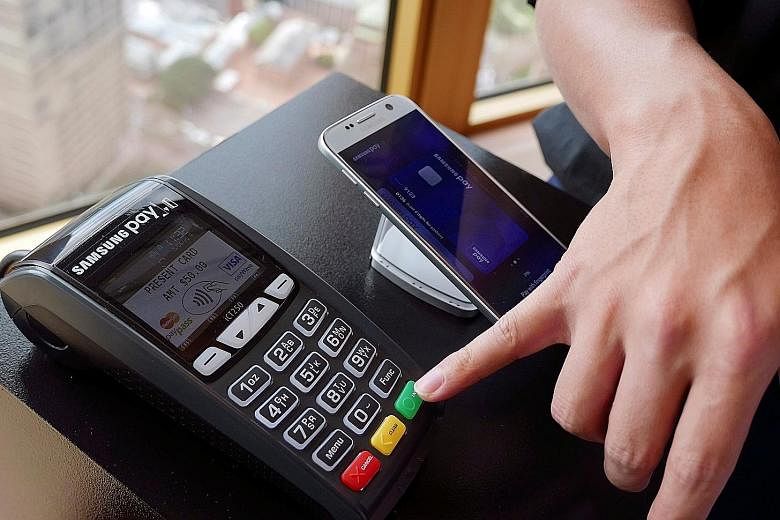Post-graduate student Huh Sun Young, 27, cannot live without her smartphone as she uses it not only to stay in touch with friends and surf the Internet, but also as a wallet.
Instead of using cash or a credit card, she swipes her Samsung Galaxy Note 5 to pay for meals at restaurants and to buy things at convenience stores.
"It is very easy to use, especially when I can't get my wallet out of my bag or when I'm carrying too many things. ... I'm concerned about security but I think it's OK because my phone is locked with my fingerprint," she said.
Ms Huh is one of three million subscribers to Samsung Pay, a mobile payment service pre-installed into newer models of Samsung smartphones. It allows one to tap the phone to make payment, using both Near Field Communication (NFC) and Magnetic Secure Transmission (MST) technologies.
Launched in August last year, Samsung Pay is a relative latecomer in the country's mobile payment market, which is dominated by IT giants Naver and Kakao.
Kakao Pay, which has over 10 million subscribers, was launched in September 2014. Naver Pay, which has more than 16 million subscribers, was launched in June last year.
Both systems, however, are not NFC-enabled and are used mainly for online payments.
There is also Payco, a system that allows users to make offline payment even if the phone is turned off. Payco, which was started by gaming company NHM Entertainment in July last year, has since merged with the country's most popular transportation card company, T-money, to expand its reach.
Like Samsung Pay, SSG Pay was also launched in August last year. It is an app-based offline payment system from the Shinsegae Group for use at its chain of department stores, supermarkets, restaurants and an online shopping mall.
South Koreans have quickly embraced mobile payment systems. A survey of 2,500 households last September on mobile payment habits showed that 85.6 per cent make purchases online with their phones; 31.8 per cent buy stuff offline using contactless payment systems including Samsung Pay, Payco and T-money; and only 5.2 per cent do not use their phones for payments at all. There are also 19.9 per cent who use their phones to take public transport.
Student Park Do In, 25, taps his phone to take public transport. His phone is equipped with a T-money chip, an NFC system which also allows him to make payment at convenience stores.
"I use this function every day when I'm travelling around. It is really convenient, but once I was stuck because my phone ran out of battery," he said.

